fashion e-commerce
startup on pre-seed ($5m)
 Try Fitme Prototype
Try Fitme Prototype
An AI-driven apparel fulfillment marketplace with virtual fitting in motion
WHY NOW?
Post-Covid-19, consumer habits have
dramatically shifted toward digitization.
People now view their mobile phones as
the ultimate source for everything —
even for ordering food.
Commercially validated trend:
the personalized approach.
Soaring compute power, bandwidth explosion
and remarkably clever AI are converging
to unlock a fundamentally new way to shop
on a global scale: futureshopping as is
(an allusion to A. Toffler).
Access to fervently committed, top-tier talent,
ready to overdeliver.
The idea has been in the air for a long time,
but so far no one has done it properly.
Competitor readiness? Suffice it to say, there isn’t
a single commercially viable solution in the live,
in-motion virtual try-on space (despite appearances, perhaps?).
See Exit Strategy for more details.
Team
Ceo

Author and visioner — Vitaly Borshchevsky.
Was born in Saint-Petersburg, Russia.
In 2020 moved to Israel, now living in Tel-Aviv.
Developed business with revenue +$40M,
customers in Forbes (Ulmart with $1B sales).
Education: software developer, designer,
neuropsychologist.

Brains
The team consists of professionals with
extensive experience in AI, e-commerce
and computer vision. They have carried out
projects for companies such LG Electronics,
Daimler-Chrysler, Cisco etc.
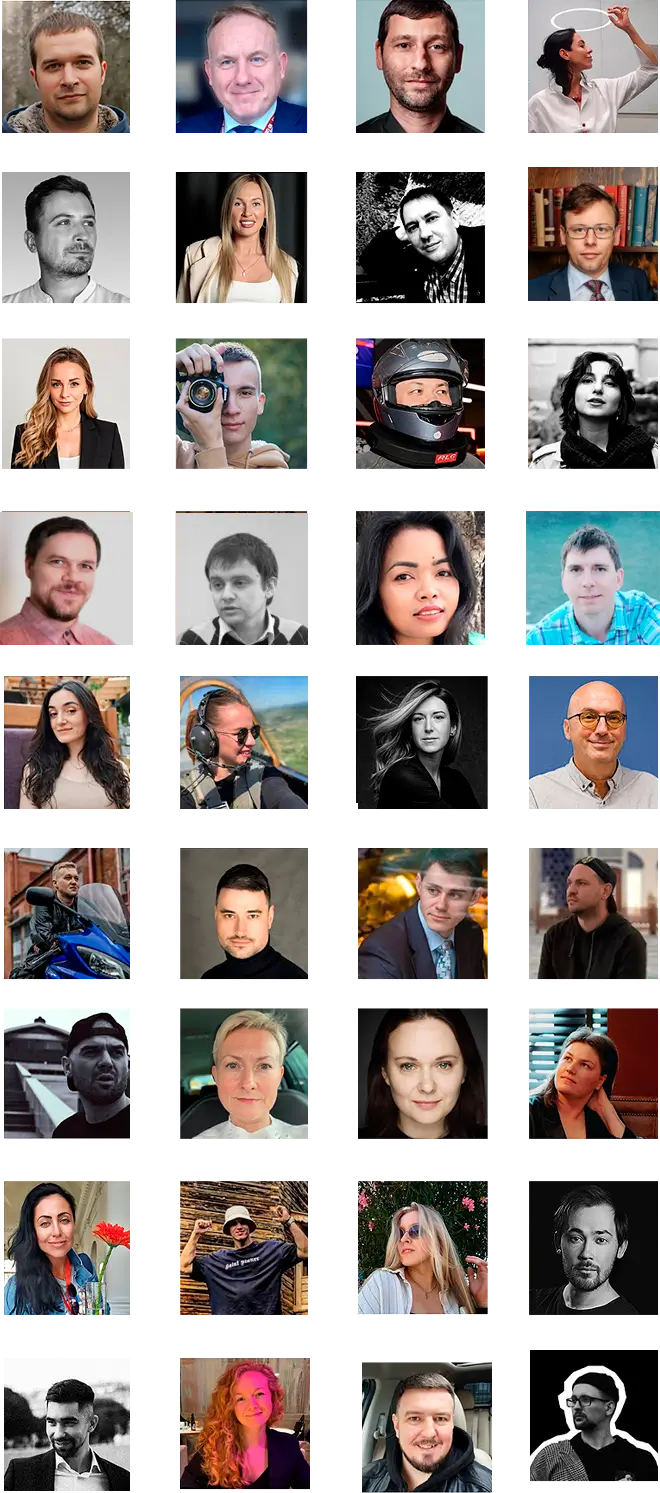
I have been working with many of them since
2006, and together we have implemented more
than 100 projects in various fields.
I also have stable connections with Universities
in Russia to find young talented students in math,
programming, physics and optics fields for the
needs of capitalism.
Why others still couldn’t create virtual fitting in motion but we can? proofs!
Yes, the tehnology is still complicated to build
full solution according to real physics properties
of body and clothes (fitting take physical sizes
into account, not just a pixels like common AI):
- capturing human body and face details by regular smartphone;
- digitalize clothes with all properties and behavior on different body shapes;
- understand physics of body and fabric;
- deals with the layers of clothes;
- take into consideration different styles based on user’s culture references and big-data;
- fast rendering and transfer video to the end-user.
The key issue for today is physycs — reality.
There are some available solutions, that can swap
your clothes on the photo (hello Google, Pika etc),
but such software do not take into account real
sizes of clothes and body and their mutual behavior.
See some projects were done by our team members
to indicate the ability to create futureshopping.

AI-CORE for THE Sophia ROBOT
The first humanoid robot with the citizenship!
Our core team have been worked for
SingularityNET and Ben Hertzel to create the
«brain» for Sopia: SAI as is.

Computer vision projectS
-
360-cameras to analize the surrounding of
Sophia, the ability to identify and recognize
multiple interlocutors, understand their
emotions, mood and intentions for a deeper
conversation. -
AI-solutions for fully automated area control:
people, actions, access, vehicles and cargo with
a precision up to 99.37% in prediction. NDA. -
 Packaging defect identification
Packaging defect identification
system for Uniliver production
in low and unstable light
conditions. -
Computer vision for medical diagnostics:
Integration into mobile applications
and endoscopes for otolaryngology (ENT)
with MRI image analysis. NDA. -
Drone-based monitoring and environmental
assessment of forest plantations. NDA. -
 Research of WinCC OA platform functional
Research of WinCC OA platform functional
capabilities for distributed systems
implementation and external modules
integration for Siemens. -
 Development of a low-cost
Development of a low-cost
high-efficiency computer vision
system for robotic vacuums. -
Development and implementation of a computer
vision module into the production process for
e-commerce expertise
30+ major online players with different business-
models, across diverse sectors, including:
- Electronics & home appliances
- Construction hypermarkets
- Automotive parts
- Tools
- Medicine (b2b)
- Children’s toys
- Adult’s toys
- 2 leading marketplaces with 200.000 daily visitors
Full business process automation.
End-to-end website development & maintenance.
Digital advertising campaign management.
Blumart — Europe’s largest plumbing and tile retail
chain, Moscow.
Transformed operations after 8 years of legacy
processes. Process automation, optimization
and innovation implementation.
Scaled from 1 store → 5+ hypermarkets (35,000+ m²
total). 7.5x monthly sales growth since partnership
began. Yearly revenue growth of 50% culminating
in $40M annual sales.

With strategic investment (far below contemporary
art prices), our fusion of AI, computer vision,
e-commerce expertise and passion can fast-track
the futureshopping.
The investor I'm looking for

A bored billionaire
— that sums up, in a nutshell, the ideal FITME
investor. Someone with whom we will
revolutionize a $5 trillion market, fundamentally
reshaping both traditional fashion retail
and e-commerce, and finally delivering to users
worldwide what they, even without realizing
it, have been waiting for — futureshopping.
Various institutional funds, risk-averse
and confining ideas within rigid scoring
frameworks — just think of Skype, Airbnb,
Dropbox, Twitter, WeWork, Zoom, Spotify, et al.
Also to be excluded: state funding — a person
with a Russian background, lacking an MBA
or an Ivy League diploma will likely appear
unfamiliar and opaque to you.
But I’d be glad to be proven wrong — Contacts.
Guided by the maxim that I’m not a dollar bill
to be liked by everyone, I’m specifically looking
for commercial entrepreneurs as partners.
Individuals motivated not primarily by money
(which you likely already have), but by
something else. An indefatigable desire to create
something large, compelling and complex —
something that dramatically alters the status quo
in a $5 trillion market.
As a slightly modified Diesel slogan aptly puts it:
“Only for the brave.”
FITME — Not just APPARELS
Clothing retail is merely the first attractive
opportunity to monetize the breakthrough
technology of merging human models with
real-life objects.
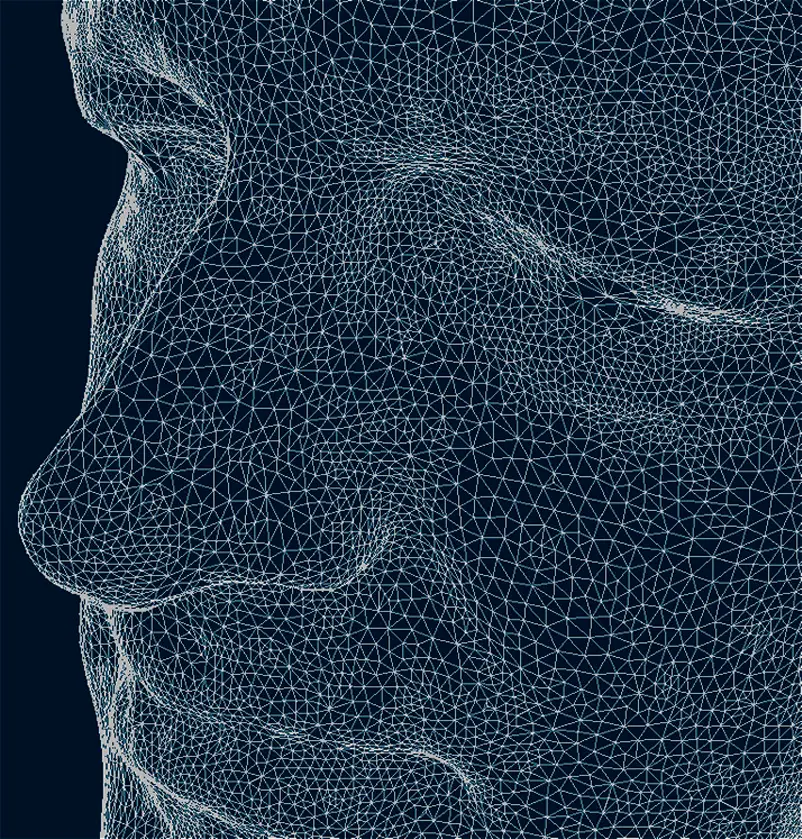
This technology of strong and specialized artificial
intelligence is easily expand into other industries,
not necessarily retail-adjacent, such as:
- medicine and cosmetology;
- design;
- security (just think about it more broadly);
- video games;
- filmmaking;
- consumer goods, marketing (big data) etc.
Collaboration with social media and mutual
integration of digital avatars offers vast marketing
opportunities (hi, Meta-universe).
It may not yet be right time to predict
the profit potential of licensing this technology,
but there’s no doubts that the potential is there.
FITME Contacts
Schedule 30-minutes appointment
Little notice:
I don’t prioritize social media engagement,
so you likely won’t find much of interest there.
Prefer to reshape reality.
Summary for investors
FITME — the biggest AI-driven apparel fulfillment marketplace with virtual fitting in motion
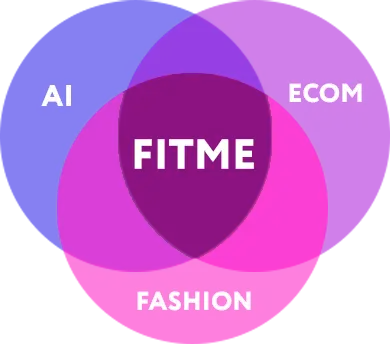
As the product of three major domains intersecting, what problem does it solve?
1. Futureshopping.
Provide a new way of consumption that meets the
expectations of today’s users. In the race for
audience attention and retention, this is even more
important than anything else.
2. Reduce returns.
When shopping for clothing, finding items that fit
well can take a lot of time. And even after making
a purchase, people often end up having to wear
a badly-fitting item or make a return.
In offline apparel retail the average return rate
reaches 8%, and goes up to 30% in online retail.
The solution — FITME
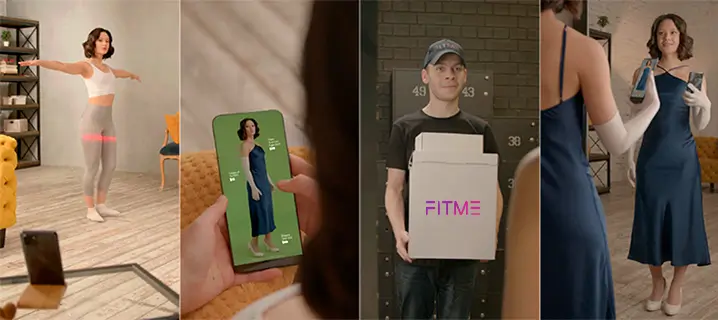
Using FITME, customers are able to define the
style, budget and brands of a large variety of
clothes, see themselves in motion while virtually
wearing various clothing options with an
unprecedentedly high level of fitting accuracy.
This is a deeply specialized AI focused on clothing
(layers), the behavior of fabrics, measuring the
human body and working as a first-class stylist
based on big data, makes our marketplace unique
and more advanced compared to its counterparts.
global market
$ 5,000,000,000,000
Every online buyer on an Earth spends avg. $1000
per year for apparel shopping, which includes
clothes, footwear, and accessories.
The revenue of the global apparel market is
estimated at $2 trillion for online and $3 trillion
for offline (STATISTA) = 5 trilion dollars market,
it’s a really big game and we are going to do here
a big revolution for current majors.

FITME financials projections
The aim: Unicorn status within 4 years post-launch.
See Downloads for detailed financial projections.
2M
31M
253M
1B
2B
investment sought
Need a lot, but not right away.
The R&D phase, that is, the development of a stable
prototype (MVP), will require $5M for 9 months.
A modern apartment in Tel-Aviv is more expensive!
After the MVP, we will need much more money:
for marketing and infrastructure to create
the largest marketplace (warehouses, personnel,
process automation, integration with factories).
The marketing budget greatly depends on which
market to launch in.
Launching in the U.S. (New York) will require
a different scale compared to testing in smaller
markets like Singapore, Hong Kong, Bangkok
or even Israel.
Please, going over the section The investor I’m
looking for to optimize our time.
download
FITME investment documentation — varying
levels of detail, distinct from the website content.
These files provide a completely different
perspective on the investment opportunity,
packaged in formats of increasing scope.
We recommend reviewing the materials
in the following order:
FITME in 1 page — executive summary (one-pager)
10-pages PDF — essential information for a
comprehensive understanding: technology (how),
team (who) and financials (how much).
30-pages PDF — detailed business plans, 5-year
projections, charts, market statistics, competitive
landscape, in-depth technical explanations,
team profiles, and exhaustive commercial models.
Developed in partnership with the Ministry
of Aliyah and Integration (Israel).
Download all documents — ZIP-archive
YouTube video 1.5 minutes
Prototype to try the technology now
Share this web-site
Important: Financial figures may be outdated.
Serious inquiries are encouraged to contact us
directly.
Exit strategy
It’s great to make money from the profits
generated by this business.
However, at a certain level of visibility,
acquisition offers from major players such as
Amazonmay emerge for the core technology.
Should an attractive offer arise, why not
entertain the conversation?
 Amazon isn’t just a hypothetical acquirer.
Amazon isn’t just a hypothetical acquirer.
Back in 2017, they acquired Body Labs
specifically to develop similar virtual try-on
capabilities.
The deal amount for the purchase of Body Labs,
a company created for $2M, was $70−100M.
It’s now 2025, and neither Amazon nor any other
player possesses a functional solution for virtual
apparel try-ons, especially in motion.
(Notably, Body Labs’ founders are sitting on
at least $68M in cash)
 A similar story with another major.
A similar story with another major.
In 2021, Walmart scooped up the Israeli startup
Zeekit (!שלום חברים). The deal’s price tag hasn’t
been officially spilled by Walmart, but Haaretz
peg it at around $200M, with the startup raking
in up to $16M in investments beforehand (now
compare with what is required to build FITME).
But here’s the kicker — Walmart still hasn’t rolled
out any virtual try-on with motion, and it’s been
years already.
All this highlights several compelling realities:
There’s money in the air — the market
shows persistent interest in virtual
apparel try-on technology.
The technology is intricate.
It's a deep dive into high-tech.
Top-tier talent is essential.
We modestly assert that we have that
covered, and are confident in success.
Time is of the essence.
Once a major player successfully
replicates something similar,
subsequent marketing costs increase.
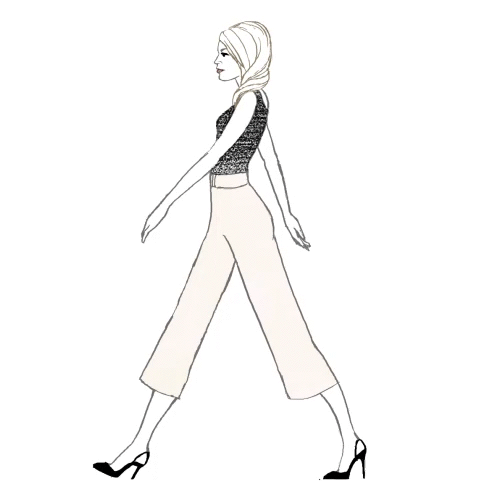
It’s better move fast. Why exactly now?
So, what do we have?
-
There’s still room in the market for a hi-tech
clothing operator, offering a revolutionary
customer experience; -
A ready product solution for automation
of a global, high-transaction e-commerce
business; -
3D-human modeling technology is already
available, we just need to adapt it to our needs;
- The prototype of the virtual fitting in motion Try Fitme Prototype
-
An ambitious team — Israeli/Russian
mathematicians, programmers and marketing
specialist with international experience; -
Vitaly Borschevsky, an Israeli citizen,
at the front end of the development team.
Combining the above will allow us to create
one more revolutionary Israeli start-up.
After 2023.10.07 many investors postpone their
investment in Israel, but today, especially
after Trump-47, the investment climate
in Israeil is much better, isn’t it?
What do we need?
To develop the technology of mass
digitalization of any clothing, footwear
and accessories, which will then be
quickly merged with a high-quality
moving digital image (avatar) of a person.
Every word matters.
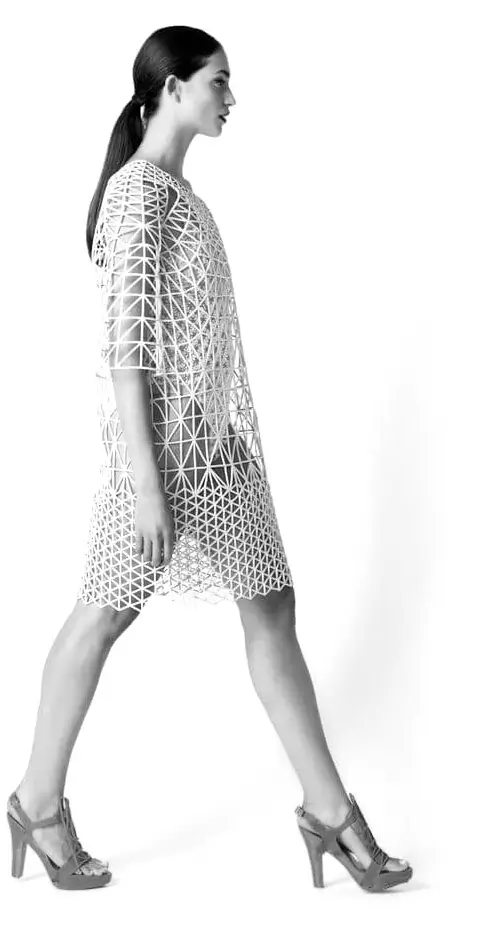
This is the purpose of the initial investment —
research and developmentof a prototype
for the technology enabling the mass
3D-merging of clothing (broadly speaking)
with a person.
There are two main approach to achieving this:
mathematics and AI.
And, of course, a combination of both.
Technical details can be found in the Download.
We estimate that the research phase will take up
to a 9 months and $5M.
The result will be a working prototype of the
technology for scanning people and clothing,
followed by quickly merging the scans into
a 3D-moving, photo-quality avatar.
 This will mark the end
This will mark the end
of the technical testing
for the business model,
and we will be ready
to apply for a patent
and continue developing
the technology into
a marketable product.
After that, only technicalities remain — websites,
apps, warehouses, logistics, and, of course,
marketing. A project as ambitious and impressive
as this won’t go unnoticed.

Money
The capacity of the clothing retail market that
we intend to revolutionize is
$ 5,000,000,000,000
— five trillion dollars.
To save the readers’ time, I won’t mention specific
total investment amounts for all project.
It would be absurd to offer overly precise
predictions, but you can find detailed financial
plans up to 5 years in the Download section.
We’re inviting the wealthy to spearhead a global
market revolution. And the first step is $5M.
Join.
It’s going to be interesting.
And profitable for sure.

Futureshopping —
shopping expirience,
relevant to the future
try FITME prototype right now for free
without any registration and sms
How does it work?
We are launching an high deep-tech fulfilment
marketplace capable of creating a precise digital
model of the human body via polygonal
multidimensional scanning. It sounds complicated,
but it’s extremely convenient for the user —
their smartphone tells them how to position
themselves in front of the camera and how to turn
to match the prompt on the screen.
In less than a minute, a detailed digital model
of the customer is ready.
Now, using any digital device, customers can
browse a huge catalog of clothing, footwear
and accessories, and “try on” only those items
that fit them perfectly in motion.
Customers can see, in real time, in full size
and with all the nuances of the body type and fabric
accounted for, how the chosen clothes fit them —
even in motion. No competitor can provide such
a service today.
The system suggests various outfits from the items
that are a perfect fit.
The only thing left to do is choose (and share).
No “perfect” models in the clothing catalog —
only the customer, in all their uniqueness.
Business has never been so personal
and interactive.
The next step in future will be to print the apparel.
In this regard, we are already much more prepared
than others, as we have an audience and all their
body peculiarities.

From the business perspective this sales model
helps, at the very least, avoid exorbitant rent
prices for mall premises, or unreasonably high
staff costs (compared to their actual output).
Customers will be able to pick out and “try on”
clothes online, saving a significant amoun oft
precious time with with one click.
After choosing an outfit (the system will suggest
items in matching sets), customers enter their
delivery details, make the payment, and wait for
their order to arrive at their address or pick-up point.
To sum up, no sales staff is involved in the
purchasing process at any point, resulting
in full self-service to mutual delight.
Customers take charge of serving themselves
through online communication channels, and only
get the products that will definitely fit them —
FITME.
A “movie” about the new you
Using a Specialized AI-Layer for Fashion
- Garment-to-garment compatibility
- Garments-to-user compatibility (style, budget
and body measurements for sure) - Region-specific aesthetic profiling
Customers get interactive hyper-personalized
recommendations from “stylists” (in quotes
because this role is primarily fulfilled by AI —
artificial intelligence guided by experienced
stylists and enriched with big data cultural
references — local movies, series, trends on social)
through the app, messengers, social networks
or email — as often as they want.
Outfit recommendations will take into account
also previously purchased items.
For example, that pair of slacks you already own
will pair perfectly with this coat and this scarf — check
out how the outfit looks on you. Everything is in
stock, will be delivered the day after tomorrow,
the discounted price of the set is 299.
Naturally, recommendations are generated
automatically. Stylists work out the general rules,
and then the system takes over to generate
specific outfits and uses the sales performance
data to independently improve, creating outfits
that sell well — in ways that humans couldn’t
possibly match.
Customers get access to a tool that allows
them to interact with their appearance
in a completely new way — a visual style
constructor.
After getting a taste of FITME, customers are
hooked — and it’s very hard to quit.
Simple psychological mechanism: dopamine hits
from “style revelations” (e.g., “I’d never have
paired this myself!”) create addiction to FITME
creative authority.
After getting a taste of FITME, customers are
hooked — and it’s very hard to quit.
With FITME, they can mix and match new items
with the clothes they already own, right on their
phone or on the website / app, create new looks
and share them on social media.
Catalog items are unobtrusively labeled with
suggestions like “matches your skirt” / “shirt” etc.
And now the clincher:
Uploading an item bought elsewhere into the
virtual wardrobe is also an option.
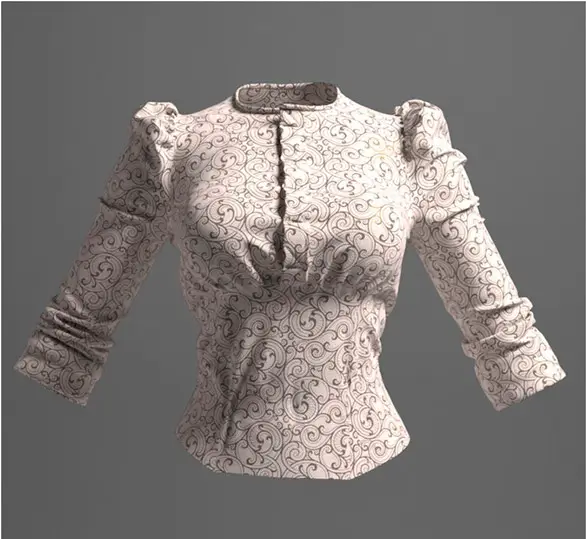
Power fashion AI-component makes FITME not
just another apparel marketplace with many filters
and virtual fitting, even in motion, but 24/7 style
co-pilot in the pocket.
It’s the next killer feature of futureshopping.
— I have nothing to wear!
— Now you do. FITME.
Total automation
The only way to successfully implement a hyper-
technological business model like this is to ensure
comprehensive, ultimate automation of the entirety
of the global business — wherever possible, replace
the human with machine and AI.
No “managers”, “operators”, “dispatchers” —
all business
processes are tightly automated.
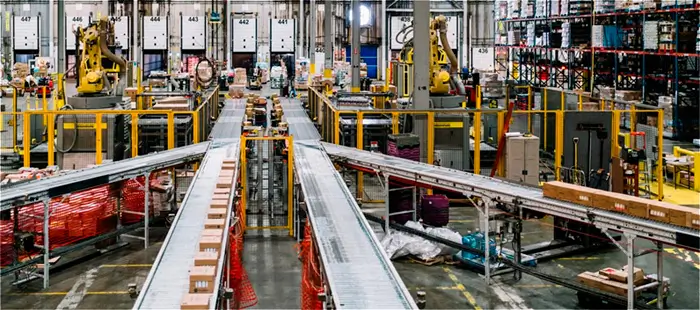
The good news is that we don’t need SAP for
a gazillion dollars (which, by the way, is not —
nor will it ever be — automated to this degree).
We have software solutions and competent
professionals capable of accomplishing these
tasks in a much more practical way.
For example, the platform on which we plan
to launch FITME was used by Ulmart — the leader
of e-commerce throughout Russia and the CIS, with a 1.3 billion dollars sales and an amount
of daily transactions that required trillions
of operations. Blumart, the largest DIY
hypermarket network in Russia, also uses this platform ($40M sales).
The core of our IT team knows how to deal with
high-load and automate such businesses.
affordable price
The catalog features a vast range of products from all brands (manufacturers) — both old and new, fashionable and less so catering every style and budget.
The new business model allows us to create a wide distribution channel, and because of that, suppliers can offer great rates.
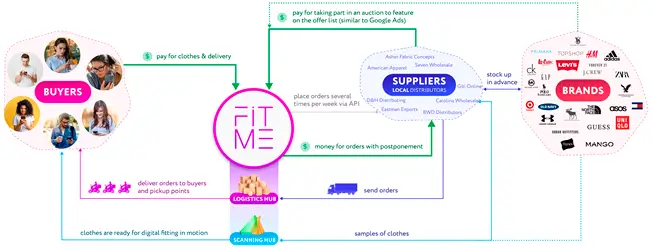
In addition to favorable purchase prices, the revolutionary try-on technology and other advantages include:
- payroll savings due to total business automation (no unnecessary staff);
- no expensive retail space (no need to rent big premises);
- IT support comparable to that of any other mid-sized business.

Competition
So far, no one’s done anything like this.
virtual fitting in motion based on
real body measurements and
clothing fabric behavior
There have been some feeble attempts to create
so-called virtual dressing rooms, but what we’re
offering isn’t just another “dressing room” —
it’s development of a breakthrough technology
that will disrupt several industries at once, and will
become the platform for launching an innovative
business model for clothing retail (to start with).
We will develop a specific AI that operates on the
actual dimension — a real fitting based on real data
and not just pixels on pixels with a lot of
augmentations as AI currently offers.
Why we can create it? — The answer is here.

It’s not a real revolution without Che, is it?
The best place for
for the launch
Launching the start-up in the United States.
The U.S., with its powerful economy,
developed logistics and receptive audience,
seems the most promising.

For the headquarter
Just because I’m Israeli and I want to support
my new/old country. Additionally, Israel has
a well-developed startup ecosystem.

For the software development
I was born in Saint-Petersburg, Russia and I have
a successful software development business there.
I know how to organize a highly effective
programming base there. Software development
costs in Russia would be two-three times cheaper
than in Israel or US maintaining extremely
high quality and control. Part of my team from
there and they will never leave their motherland.
I plan to make the most of each my countries.















